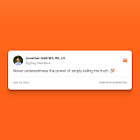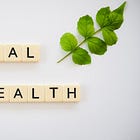Recent Recall Notice on Psychiatric Drugs: Antidepressant Duloxetine (Cymbalta)
Learn about the recent recall related to Duloxetine (Cymbalta) and what options you may have.
N-nitroso duloxetine
As you may have seen in the news recently, the FDA has sent out a massive recall for the common antidepressant drug for Duloxetine (brand name Cymbalta) due to impurities that could cause acute and chronic harm to those who take these contaminated drugs.
The issue here is with the detection of a nitrosamine impurity, N-nitroso duloxetine, above the proposed interim limit, which poses a high health risk for anyone who consumes it.
Let’s dive in!
Welcome to ZigZag Nutrition
This is my newsletter that I started 4 years ago now (wow) to give us a chance to explore all things health and wellness with the freedom to learn the true fundamentals of health and healing. Substack offers us that chance in the age of unimaginable censorship across most modern media.
You’re going to want to make sure you are subscribed if you’re not already.
Go ahead and open that subscribe now button in a new tab and keep on reading.
Now back to “N-Nitroso Duloxetine” - however you think you can pronounce that.. go for it..
For us science-y folks, I’ve attached some chemistry details of the compound below. Learn more here.

GHS Hazard Statements: GHS (Globally Harmonized System of Classification and Labelling of Chemicals) is a United Nations system to identify hazardous chemicals and to inform users about these hazards.
H301 (100%): Toxic if swallowed [Danger Acute toxicity, oral]
H351 (100%): Suspected of causing cancer [Warning Carcinogenicity]
In other words, we DON’T want people consuming this AT ALL.
“The US Food and Drug Administration (FDA) has announced a voluntary manufacturer-initiated recall of more than 7000 bottles of duloxetine delayed-release capsules due to unacceptable levels of a potential carcinogen.
Duloxetine (Cymbalta) is a serotonin-norepinephrine reuptake inhibitor used to treat major depressive disorder, generalized anxiety disorder, fibromyalgia, chronic musculoskeletal pain, and neuropathic pain associated with diabetic peripheral neuropathy.
The recall is due to the detection of the nitrosamine impurity, N-nitroso duloxetine, above the proposed interim limit.
Nitrosamines are common in water and foods, and exposure to some levels of the chemical is common. Exposure to nitrosamine impurities above acceptable levels and over long periods may increase cancer risk, the FDA reported.
If drugs contain levels of nitrosamines above the acceptable daily intake limits, FDA recommends these drugs be recalled by the manufacturer as appropriate,” the agency noted on its website.
The recall was initiated by Breckenridge Pharmaceutical and covers 7107 bottles of 500-count, 20 mg duloxetine delayed-release capsules. The drug is manufactured by Towa Pharmaceutical Europe and distributed nationwide by BPI.
The affected bottles are from lot number 220128 with an expiration date of 12/2024 and NDC of 51991-746-05.”
Learn more about this specific recall here and educate yourself about the history of recalls related to nitrosamine impurities in medications here. Want to learn more about the history of FDA recalls? Check out this nifty tool by the FDA that gives us some insight on published recalls over the last 12 years.
Now, if you’re anything like me, you’re probably wondering why the heck this hazardous chemical was even hanging around this commonly prescribed drug in the first place…?
Duloxetine is a medication used to manage major depressive disorder (MDD), generalized anxiety disorder (GAD), fibromyalgia, diabetic peripheral neuropathy, and chronic musculoskeletal pain. Off-label uses for duloxetine include chemotherapy-induced peripheral neuropathy and stress urinary incontinence. It is in the Serotonin and norepinephrine reuptake inhibitors (SNRIs) class of medications.
According to Wikipedia, In 2022, it was the 31st most commonly prescribed medication in the United States, with more than 18 million prescriptions. Historically, the data shows that total prescriptions per year hover around +20,000,000 (that’s 20+ Million) with active prescriptions going to at least 4 Million patients each year. Most commonly prescribed in increments of 20-30mg for adults, from 20mg-60mg 1-3x per day not exceeding 120 mg/day in total.
This toxic chemical compound “N-nitroso duloxetine” is found in every medication as a way to influence serotonin and norepinephrine pathways as well as dopamine signaling in the brain. In situations like this, they are routinely using trace amounts of this toxin to provoke the physiological responses they want, without pushing someone over their limits of use and making them sick and toxic.
But here’s the thing…
What I’ve never understood about pharmaceutical medications is that we prescribe toxins at trace amounts with the full understanding of “the dose makes the poison” type of scenario, but we never reflect on bio-individual variation in each person’s ability to breakdown said compounds, properly metabolize and assimilate and eliminate these medication trace toxins and their metabolites. Every person is different and we give little credence to this fact.
Most drugs are thought to be metabolized by primarily the liver, hence the concerns for liver toxicity with most drugs and medications. In addition, extrahepatic (outside of the liver) drug metabolism takes place in the GI tract, kidneys, lungs, plasma, and skin.
Let us remember, we live in a day and age in which many people have “sluggish liver-gallbladder” functions and “poor detox pathways” as we clog our pores with aluminum antiperspirant deodorants and think it is culturally taboo to be sweating everyday, let alone defecating like we should be.
Most people could drink more water, consume more whole food fiber in their diet, and reduce their intake of cosmetic chemicals via the skin and scalp, as well as reduce their intake of ultra-processed foods that pose further exposure routes to problematic contaminants, chemicals, and preservatives our body just can’t handle.
Imagine this, you’re born into this world with an average human having the ability to manage toxins in their environment equal to the amount one can store into a small 150mL glass jar.
Yet, we have manufactured a world around us in which every single day we are being subject to several different kinds of toxic chemicals, from prescription drugs, to personal care products, to PFAS “forever chemicals” carried by fast food consumption, to your kid’s school still containing trace amounts of cadmium and antimony in the school’s drinking water.
I could go on….
I didn’t even talk about fluoride
or lead…
Imagine it, you have a 150 mL jar that you can scarcely manage to hold your environmental toxins in, while life in modernity rushes on you to hold bucketfuls of toxins that are weighing you down from the inside out.
Here come the buckets pouring into your little clear glass jar absolutely overflowing and flooding it like a massive hurricane of toxins are taking over your body’s ability to hold space and place for. That’s life.
Unless we choose to be different.
What we must also consider is that some people are at higher risks than others when they are exposed to these toxins in their environment.
Not every person has a healthy… gut, liver, two healthy kidneys, a set of healthy lungs, or a whole healthy lymphatic system to help support their optimized ability to intake chemicals and properly metabolize and eliminate them from the body (and brain). This is why I am incredibly context-driven, open to discuss the nth degree of details to give myself - and all of us - the greatest perspective of clarity on any given situation as much as we can muster, for the purposes of making good, well, and well-informed decisions in all areas of life and wellness.
When we think about personal precision medicine and consider risk-benefit analysis, I firmly believe that there are many safer options to improving mental health and wellbeing than taking commonly prescribed (overprescribed) psychiatric medications that often possess toxic chemicals and long lists of wild side effects all while the giant pharmaceutical companies spending millions on marketing continue to drain patient bank accounts.
Furthermore, using the lens of focusing on whole-person health, exploring the root cause of dis-ease and in-depth insights of functional medicine, we can dig deeper and learn more about a person’s unique health needs from genetics to metabolic and neural pathways to giving space for more mind-body medicine thoughts around healing childhood trauma, implementing routines around breathwork, meditation, and perhaps even alternatives such as MDMA or psilocybin.
We must do more. That is not my opinion, but a sheer fact on this matter.
I believe in giving people options and not controlling the narratives around mental health and wellbeing. And as Jon Haidt (aka Jonathan Haidt, proficient writer, author, and academic professor) who publishes
and others like Andrew Sullivan have written on extensively, there are more variables at play here within our environment for the CAUSE of mental health decline that we can actively CHANGE and engage in as well.Take a look at this graph below that is commonly used to display the trends involved with anxiety amongst people in the United States since the introduction of smartphones and living primary lives via social media as compared to IRL. We can talk about the psychological aspects of it all, but we can also explore the physiological pieces to this non-perplexing puzzle as well.
MORE time on social media = LESS time in real relationships in real community.
LESS time in real relationships in real community = LESS safety, LESS security, MORE stress, LESS oxytocin, LESS long-term supply of serotonin.
MORE time on social media = MORE cortisol from staring at a screen 5-inches from your face that was inherently designed with a light spec to provoke attention and elicit addictive potential. + Blue light as you well know by now as an issue (at night) if you follow my newsletter. More blue light exposure at night equals less sleep and more disturbed sleep.
MORE time on social media = MORE sleep disturbances
MORE sleep disturbances = MORE anxiety and HIGHER rates of poor mental health
MORE anxiety and HIGHER rates of poor mental health = MORE pharmaceutical prescriptions.
And as I’ve also written about before (links below), we have sufficient supply of simple and effective ideas we can take advantage of to implement in our everyday lives to support positive mental health and less mind-numbing, life-sucking hours spent on social media.
ZigZag Nutrition represents the pursuit we share as we strive to live this life as best as we can, learning and growing, flexing and adapting along the way to better align ourselves to the most nutritious life and lifestyle that meets our needs and nourishes our body, mind, and spirit - together.













